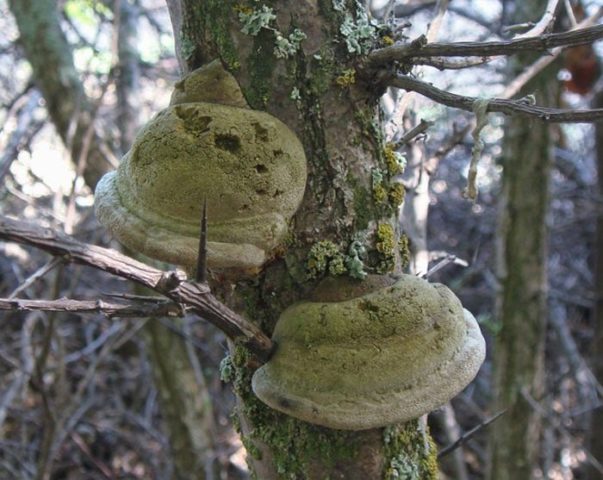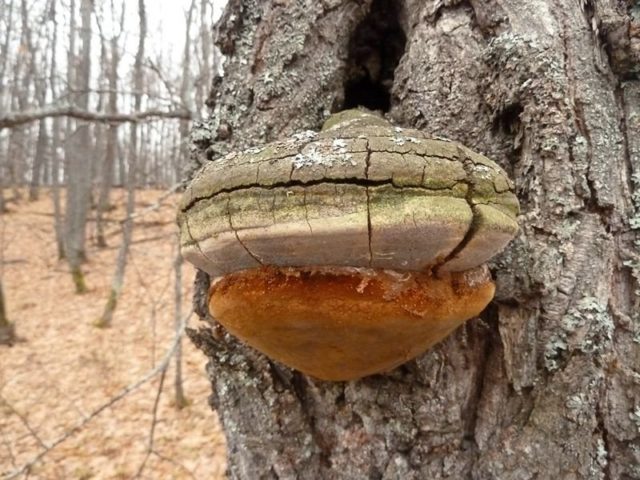Content
The sea buckthorn tinder fungus was described recently, before that it was considered a variety of the false oak tinder fungus. It belongs to perennials, grows on sea buckthorn (on living old bushes).
Description of sea buckthorn tinder fungus
Fruit bodies are sessile, hard, and various in shape. They can be hoof-shaped, rounded, half, half-spread. Dimensions - 3-7x2-5x1.5-5 cm.
The surface of the cap of a young specimen is thin, velvety, yellowish-brown. In the process of growth, it becomes bare, furrowed-zonal, with convex zones, the shade is from grayish-brown to dark gray, often covered with epiphytic algae or mosses.
The edge of the cap is rounded, dull, in an adult fungus or when it dries, it often cracks from the base. Fabric - from brownish to rusty-brown, woody, silky in the cut.
The spore-bearing layer is brown, brown, rusty-brown. The pores are small, rounded. The spores are fairly regular in shape, spherical or ovoid, thin-walled, pseudoamyloid, their size is 6-7.5x5.5-6.5 microns.

Often, the mushroom envelops or half surrounds thin trunks and branches.
Where and how it grows
It settles in coastal or riverine thickets of sea buckthorn. It is found in Europe, Western Siberia, Central and Central Asia.
Is the mushroom edible or not
Refers to inedible species. They do not eat it.
Doubles and their differences
Sea buckthorn polypore microscopically practically does not differ from the false oak tree. In the first, the fruit bodies are smaller, they differ in the correct shape (hoof-shaped or round), the pores are larger and thinner.
False oak tinder fungus is at first a shapeless rusty-brownish outgrowths, which in a mature specimen acquire a hoof-like or cushion-shaped shape and a gray-brown color. The surface is bumpy, with wide furrows and cracks. Size - from 5 to 20 cm. The pulp is woody and very tough.
They belong to cosmopolitan mushrooms, they are common in places where oaks grow. They cause white rot in trees.

Sometimes false tinder fungi settle on hornbeams, apple trees, chestnuts
Conclusion
Sea buckthorn tinder fungus is a parasite that is quite aggressive towards the trees on which it grows. It causes a fungal disease in the shrub - white rot. In Bulgaria it is included in the Red List.








